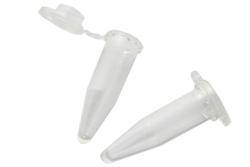Epigenome analysis links gene regulatory elements in group 2 innate lymphocytes to asthma susceptibility.
Stadhouders R, Li BWS, de Bruijn MJW, Gomez A, Rao TN, Fehling HJ, van IJcken WFJ, Lim AI, Di Santo JP, Graf T, Hendriks RW
BACKGROUND: Group 2 innate lymphoid cells (ILC2s) are major producers of the cytokines driving allergic asthma, and increased ILC2 numbers have been detected in blood and sputum of asthmatic patients. Asthma susceptibility has a strong genetic component, but the underlying mechanisms and whether asthma genetics affect ILC2 biology remain unclear. OBJECTIVE: We sought to study the ILC2 transcriptome and epigenome during airway inflammation (AI) to couple these to genes and genetic variants associated with asthma pathogenesis. METHODS: Mice harboring a reporter for the key ILC2 transcription factor GATA-3 were subjected to IL-33-driven AI, and ILC2s were isolated from bronchoalveolar lavage fluid and mediastinal lymph nodes. Human ILC2s were purified from peripheral blood and activated in vitro. We used RNA sequencing, genome-wide identification of histone-3 lysine-4 dimethylation-marked chromatin, and computational approaches to study the ILC2 transcriptome and epigenome. RESULTS: Activated ILC2s in mice displayed a tissue-specific gene expression signature that emerged from remarkably similar epigenomes. We identified superenhancers implicated in controlling ILC2 identity and asthma-associated genes. More than 300 asthma-associated genetic polymorphisms identified in genome-wide association studies localized to H3K4Me2 gene regulatory elements in ILC2s. A refined set of candidate causal asthma-associated variants was uniquely enriched in ILC2, but not T2 cell, regulatory regions. CONCLUSIONS: ILC2s in AI use a flexible epigenome that couples adaptation to new microenvironments with functional plasticity. Importantly, we reveal strong correlations between gene regulatory mechanisms in ILC2s and the genetic basis of asthma, supporting a pathogenic role for ILC2s in patients with allergic asthma.

